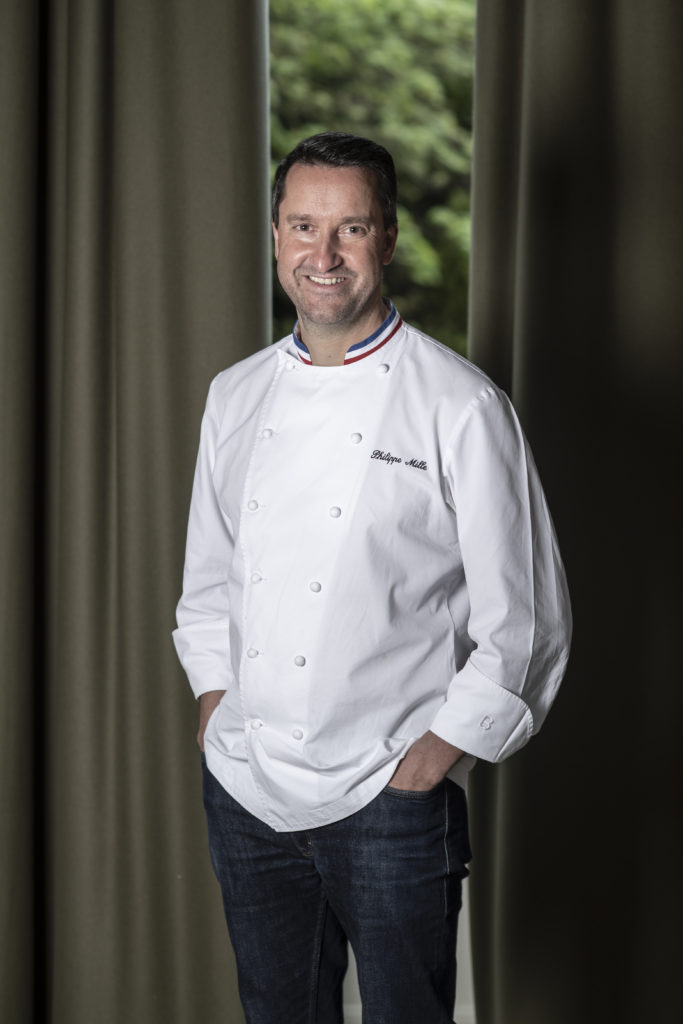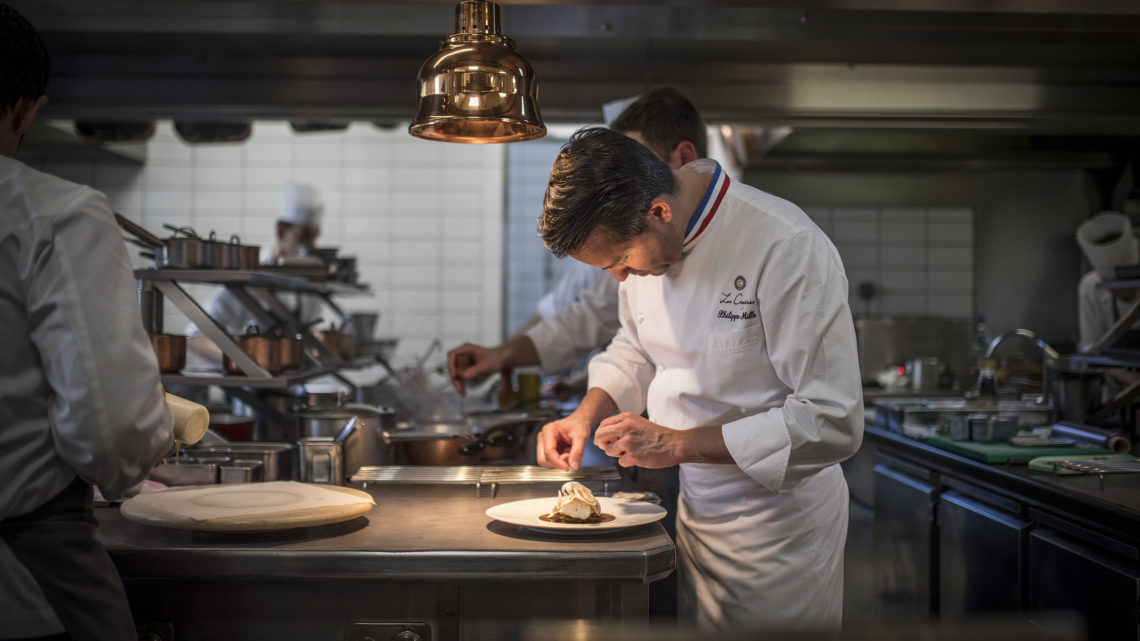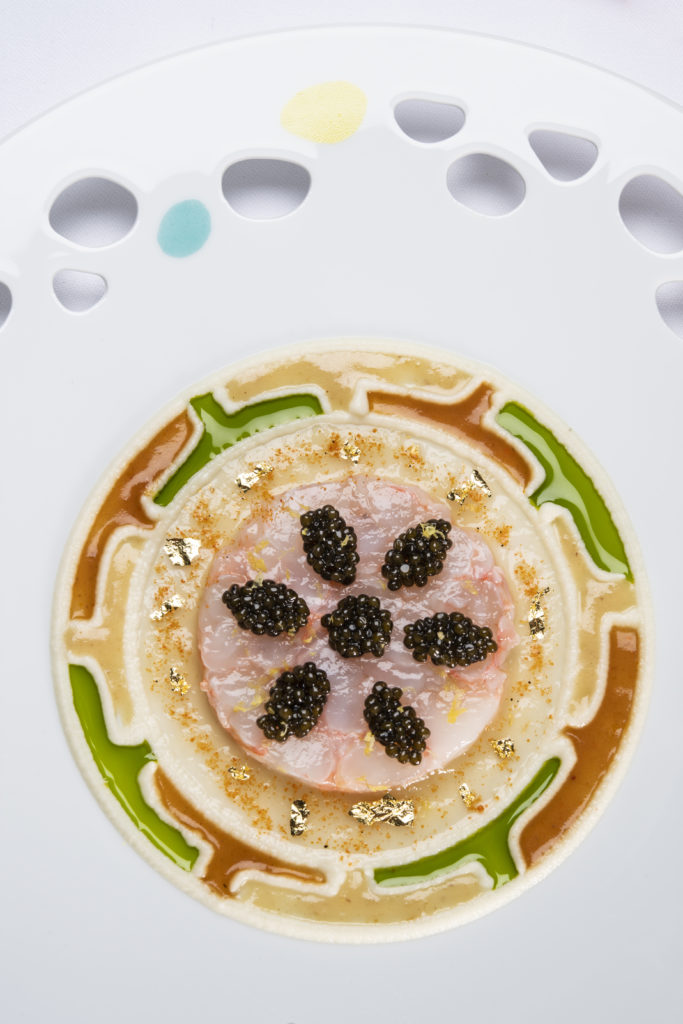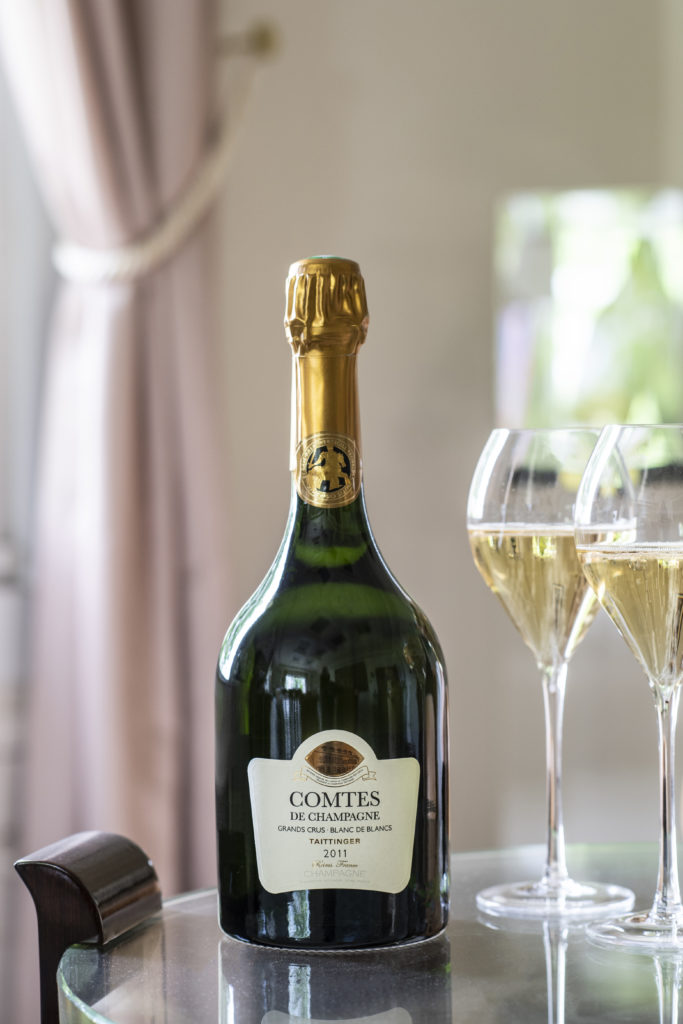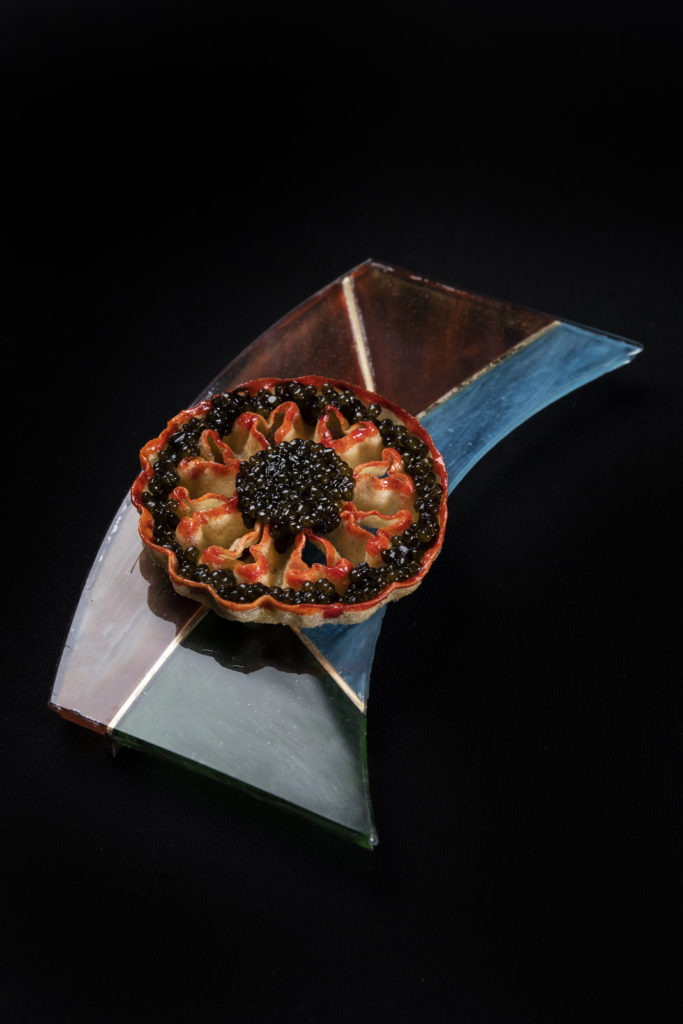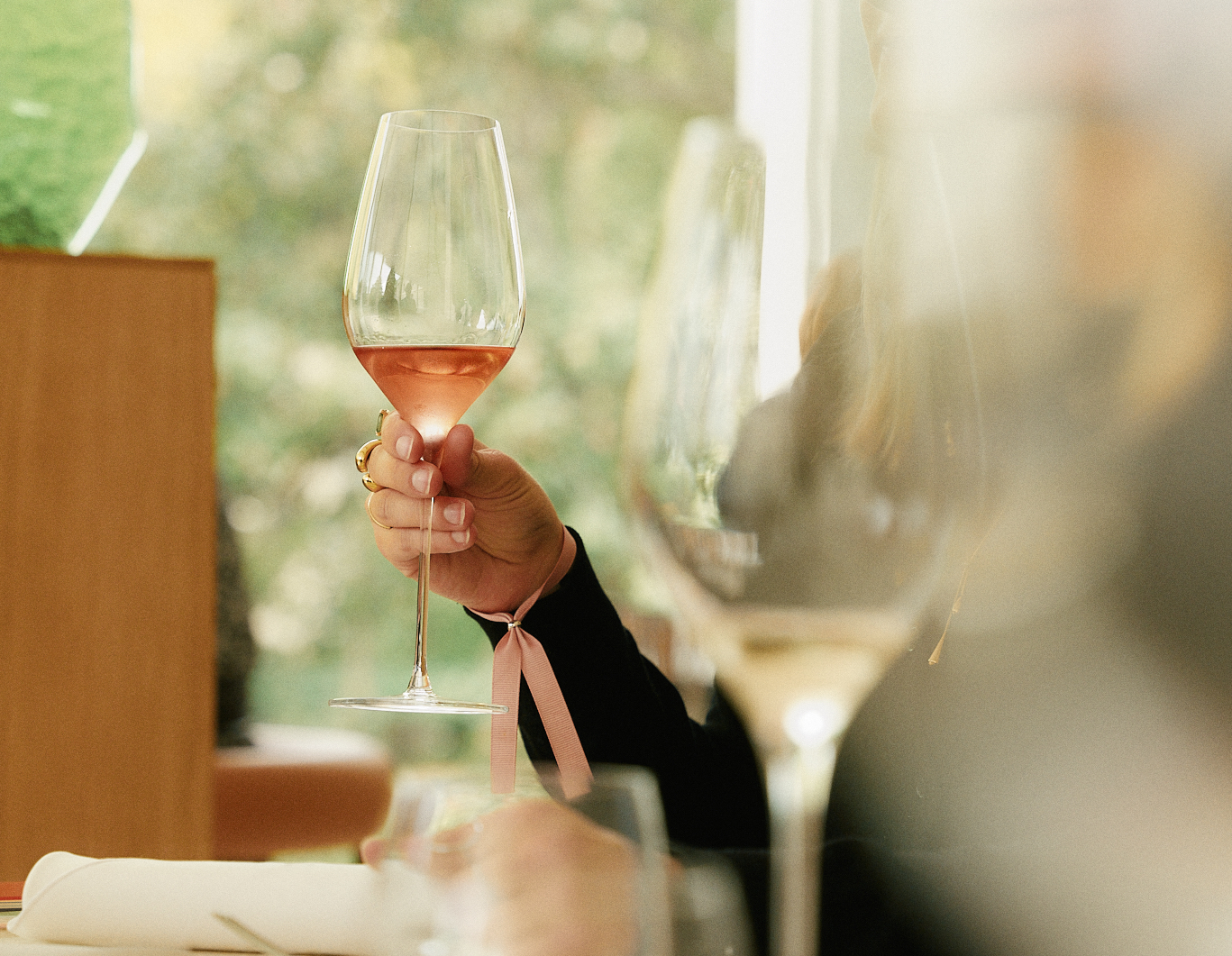Philippe Mille – Meilleur Ouvrier de France and Grand Chef Relais et Châteaux (2011), winner of the National Artistic Cooking Awards in 2008 and the Bocuse d’Or bronze medal in 2009 – is the twice Michelin-starred chef in charge of the Domaine des Crayères kitchens in Reims since October 2009. He describes his cuisine for this holiday season, deliciously infused with the traditions and culture of the Champagne region.
The prestigious Domaine des Crayères may close its doors for the month of December, but Chef Philippe Mille is busy preparing his own end-of-the-year meal and has agreed to reveal its secrets: “I always prepare a delicious poultry dish for the holidays, such as a plump poularde, perhaps seasoned with truffles. You could also mix 100g of butter with 100g of breadcrumbs or soft bread, 100g of walnuts or hazelnuts, minced herbs and a bit of Gruyère cheese. This mixture should be slipped under the skin. You might add a dash of vin jaune from the Jura region. This preparation will season the breast meat. Prepare this two days ahead of the meal in order to allow the preparation time to infuse; not to mention that preparing a meal bit by bit makes it much simpler. Tie the poularde with string and lay it in a pot with some carrots, onions, a turnip and a leak, like with a poule au pot. Add water to cover and season. Bring to the boil and let simmer for 20 min. The fragrant bouillon will thus have time to infuse the meat. On the day the meal is to be served, drain the poularde and put it in the oven to roast for about 15 minutes. The poularde will be both juicy and crisp. You can also enjoy the bouillon later with the addition of some alphabet pasta!”
Our mouths are already watering and the chef concludes by suggesting that we accompany this feast with some turnips and black radishes, paired with a rosé champagne.
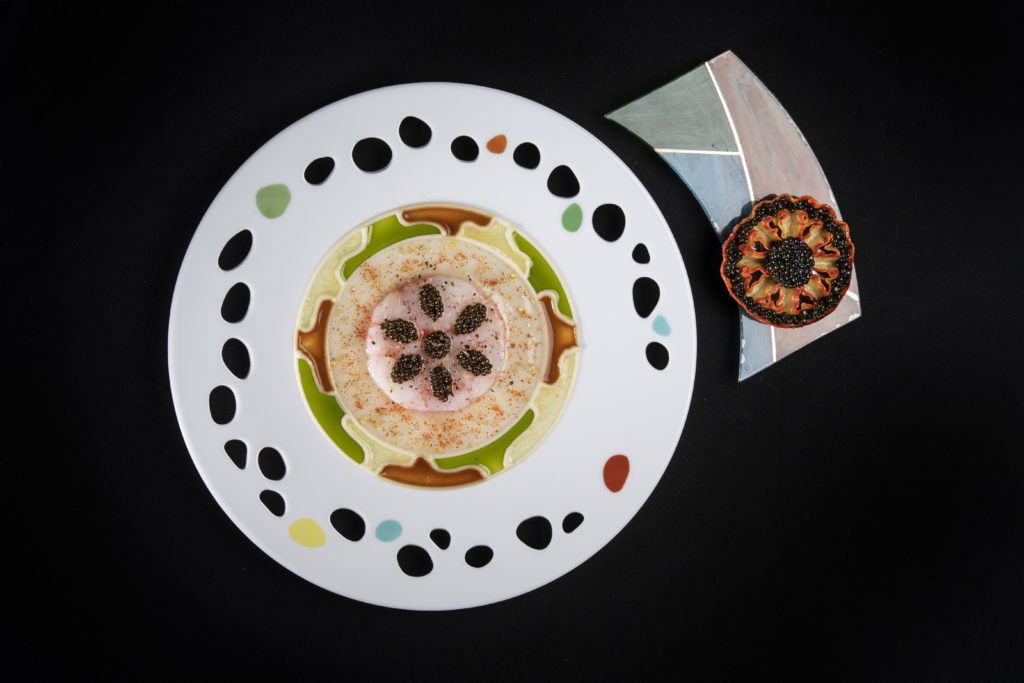
“Christmas is a time to share with the whole family; it may sometimes be the only time.” Chef Philippe Mille’s working philosophy is based on the values of sharing and transmission as witnessed in his new book “L’âme de la Champagne, Artisanat d’art et haute gastronomie” [The Soul of Champagne, the Craftsmanship of Art and Fine Cuisine] (288 pages, published by Albin Michel). He explains his love for his adopted region and invites us to explore his creative process. “I’ve been thinking about this project for 8 years but never had the time to put it to paper. My father was a blacksmith, then a master ironmonger, so I was always immersed in art; I love visiting museums. It complements cooking for me, it’s both a joy and a way to imagine my dishes differently.”
The book presents sixteen artisans and sixteen materials used in creating the chef’s compositions. Based on craftsmanship such as that of the master glassmakers of the Atelier Simon-Marq and monuments such as Saint Joseph church or Reims Cathedral, he highlights his inspirations and delights our palates in a langoustine carpaccio surrounded by cleverly selected condiments. “To accompany this langoustine, I laid the condiments out in the shape of a stained glass window where the colours clash and ‘shake hands’.”Served with a wafer echoing the Cathedral rose window and placed on a piece of stained glass produced by the Simon-Marq workshop, the dish is a culinary interpretation of a piece of master craftsmanship.
Philippe Mille reminds us however that the visual aspect is not the priority in cooking. His approach is more in keeping with a desire to magnify the product in all its flavours and textures. To accompany such a daring dish, he chooses a champagne from the Taittinger Comtes de Champagne cuvee, the 2011 Blanc de blancs “for the silkiness and acidity that ravish the langoustine but also for the new notes revealed with the combination of condiments”.
Philippe Mille’s cuisine is a tribute to his region’s savoir-faire as well as an invitation to sharing and transmission. A member of the jury for the upcoming Le Taittinger, International Signature Cuisine Prize, he shares his pride in contributing to the talents of tomorrow. “I especially love being in the kitchen to watch the techniques, the expertise, the tension and how everyone is enjoying themselves. It is an international competition and you see the different techniques of each country, the different ways of approaching a product. There is still so much to see. You have to step back and learn from one another to advance, just like the world does.”
